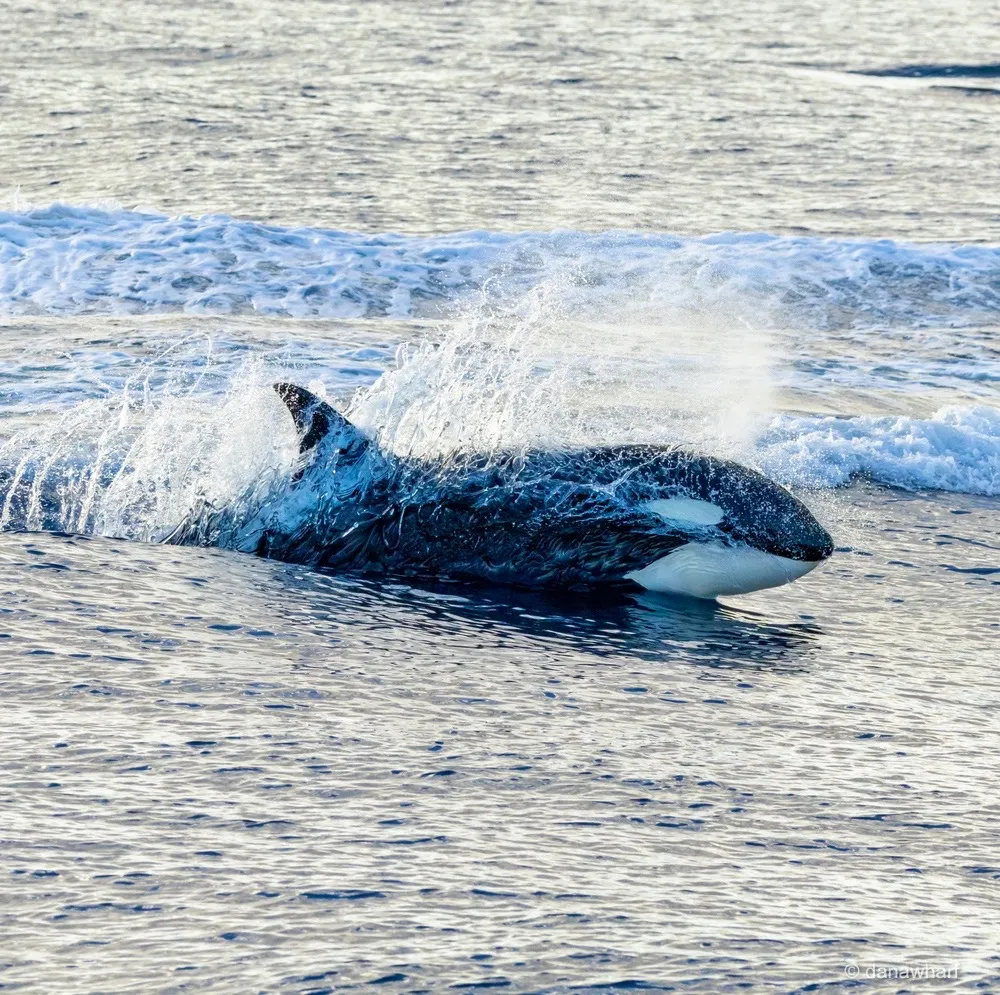Are Orcas Considered Dolphins or Whales?

Killer whales, or orcas, are a fascinating spectacle of the marine world. Their striking black and white coloration and formidable size make them easily recognizable.
Yet, a common question arises: Are orcas considered dolphins or whales? This confusion stems from their name and their size, which rivals that of many whale species.
In this article, we delve into the biological classification of orcas. We’ll explore their characteristics, behaviors, and how they compare to dolphins and whales.
Join us as we unravel the true identity of these magnificent creatures.

What Are Killer Whales?
Killer whales, known scientifically as Orcinus orca, are marine mammals found in oceans worldwide. They are the largest members of the dolphin family, Delphinidae.
Their common name, “killer whale,” often leads to confusion. Many people mistakenly believe they are a type of whale.
In reality, orcas are dolphins. They share many traits with their smaller cousins, including high intelligence and complex social structures.
Their diet is diverse, including fish, seals, and even other whales, earning them the status of apex predators.
The Dolphin Family and the Orca’s Place Within It
The dolphin family, Delphinidae, is a group of marine mammals known for their intelligence and agility. This family includes species commonly recognized as dolphins, such as the bottlenose dolphin.
Orcas hold a unique position within this family. They are the largest members, with males reaching lengths of up to 26 feet and weights of up to 6 tons.
Despite their size, orcas share many characteristics with other dolphins. These include a streamlined body shape, a dorsal fin, and a blowhole for breathing.
The term “whale” is a common name, not a scientific one. It can refer to all cetaceans, including dolphins and porpoises. This is where the confusion often arises.
- Orcas are dolphins, not whales.
- They are the largest members of the dolphin family.
- The term “whale” can refer to all cetaceans, including dolphins and porpoises.
Understanding the orca’s place within the dolphin family helps clarify their classification and dispel common misconceptions.
Physical Characteristics: How Orcas Resemble Dolphins
Orcas share several physical traits with other dolphins. One of the most noticeable is their streamlined body shape, designed for efficient swimming.
Another shared characteristic is their distinctive dorsal fin. In orcas, this fin can reach heights of up to 6 feet in males, making it a prominent feature.
Like all dolphins, orcas also have a blowhole on top of their heads. They use this blowhole to breathe air when they surface.
Behavior and Social Structure: The Dolphin-like Nature of Orcas
Orcas exhibit behaviors typical of dolphins. They are highly intelligent creatures with complex social structures, known as pods.
These pods can number up to 40 individuals. Within these groups, orcas communicate using a variety of vocalizations.
Like dolphins, orcas also use echolocation for navigation and hunting. This ability further emphasizes their place within the dolphin family.
Speed in the Water: Are Dolphins Faster Than Orcas?
When it comes to speed, orcas are impressive swimmers. They can reach speeds of up to 34 mph (56 km/h).
In comparison, the common bottlenose dolphin can reach speeds of up to 21 mph (34 km/h). This makes orcas faster swimmers than some dolphin species.
However, it’s important to note that speed can vary among different species of dolphins and orcas.
Observing Orcas in the Wild: Dana Wharf Whale Watching
For those interested in observing orcas in their natural habitat, Dana Wharf Whale Watching is a great option. This location offers opportunities to see these magnificent creatures up close.
Remember, observing wildlife should always be done responsibly. Respect for these animals and their environment is paramount.
Conservation Status and the Importance of Understanding Orca Classification
The conservation status of orcas varies by population. Some are considered endangered due to threats like pollution, habitat loss, and reduced prey availability.
Understanding the classification of orcas is crucial. It helps us appreciate their unique role in the marine ecosystem and the importance of their conservation.
Informed knowledge about orcas can lead to better conservation efforts. It can also inspire sustainable practices to protect these magnificent creatures and their habitats.

Conclusion: Embracing the Orca’s True Identity
In conclusion, orcas are indeed dolphins, not whales. They are the largest members of the dolphin family, exhibiting many dolphin-like characteristics.
Understanding their true identity helps us appreciate their unique role in the marine ecosystem. It also sheds light on their fascinating behaviors and social structures.
Embracing the orca’s true identity as a dolphin is a step towards understanding and conserving these magnificent creatures.
